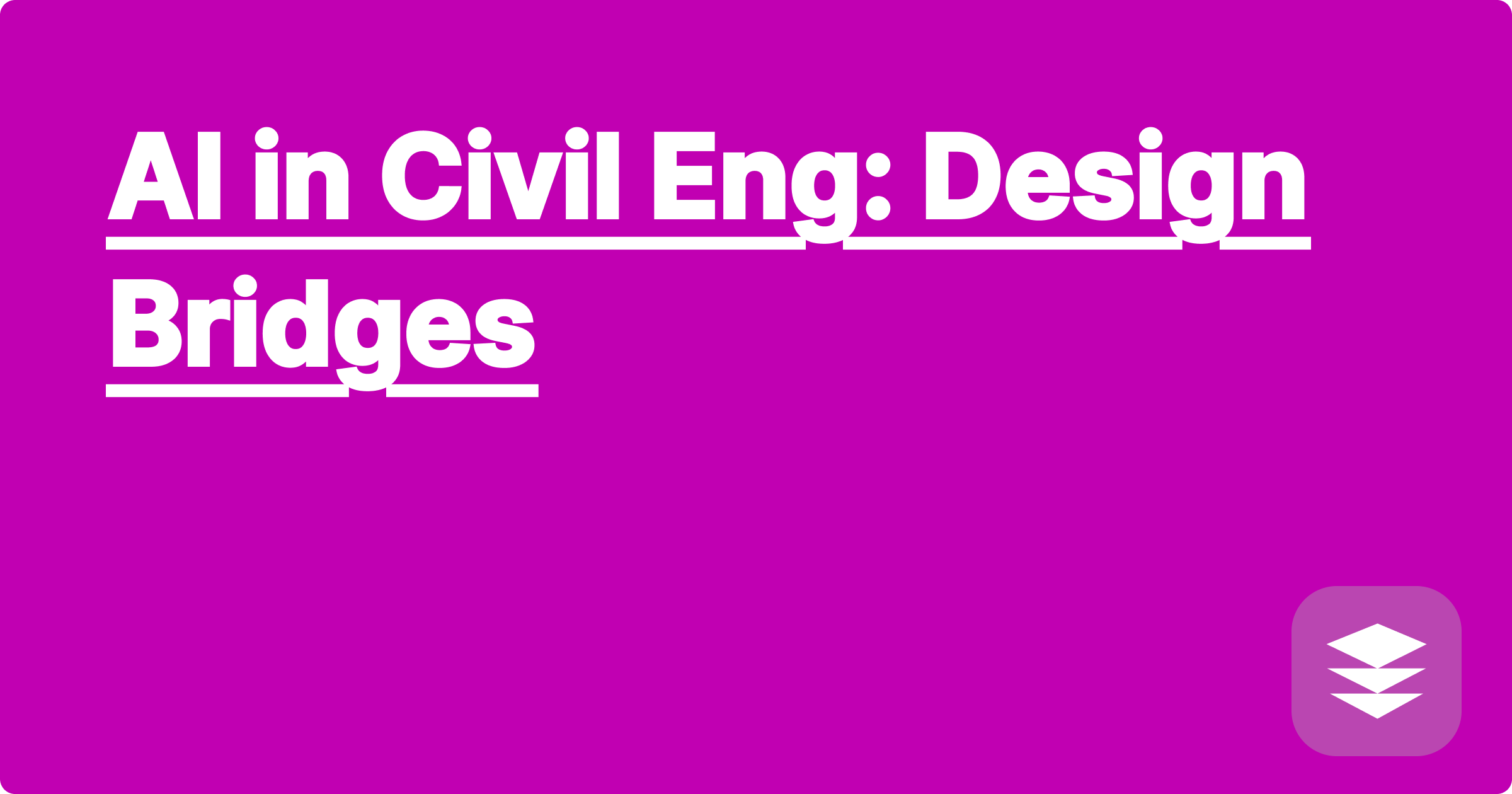
The world of civil engineering, particularly bridge design, is undergoing a dramatic transformation thanks to the rapid advancement of artificial intelligence. Traditionally, designing a bridge involved countless hours of manual calculations, simulations, and design iterations. This process, while effective, could be time-consuming and prone to human error. Now, AI is stepping in to streamline these processes, offering unprecedented levels of efficiency and accuracy, and opening up new possibilities for innovative bridge designs. This shift presents an incredible opportunity for STEM students and researchers to not only improve their academic performance but also to contribute to the cutting edge of civil engineering.
For STEM students, especially those specializing in civil engineering, understanding and utilizing AI in bridge design is no longer a luxury, but a necessity. The job market is increasingly seeking graduates proficient in AI-driven design tools and techniques. Beyond career prospects, leveraging AI can significantly enhance your academic experience by freeing up valuable time, allowing you to delve deeper into complex concepts and research. This blog post will guide you through the exciting world of AI-driven bridge design, offering practical tips, real-world examples, and insights into how you can integrate these powerful tools into your studies and research, ultimately boosting your academic success.
Designing a bridge is a multifaceted challenge that requires a deep understanding of structural mechanics, material science, environmental factors, and cost considerations. Engineers must carefully analyze loads, stresses, and deflections under various conditions, ensuring the bridge's structural integrity and longevity. Traditional methods often involve complex calculations and iterative design processes, which can be tedious and time-consuming. Furthermore, incorporating real-world factors like wind loads, seismic activity, and material degradation adds another layer of complexity. These challenges necessitate innovative solutions that can enhance both the efficiency and accuracy of bridge design, and AI is proving to be a game-changer in this regard.
AI offers a powerful toolkit for tackling the complexities of bridge design. Tools like ChatGPT and Wolfram Alpha can be invaluable for preliminary design exploration and brainstorming. ChatGPT can assist in generating initial design concepts based on specific requirements, while Wolfram Alpha can handle complex calculations and provide insights into material properties and structural behavior. More specialized AI tools, such as Karamba3D, a parametric structural engineering tool within Grasshopper, allow for generative design exploration. By defining design parameters and constraints, Karamba3D can generate and analyze numerous design options, optimizing for structural performance and material efficiency. Furthermore, AI-powered simulation software can predict the bridge's behavior under various conditions, allowing engineers to identify potential weaknesses and optimize the design before construction begins.
The implementation of AI in bridge design typically begins with defining the project requirements and constraints, including span length, traffic load, environmental conditions, and budget limitations. This information is then fed into an AI-powered design tool, such as a generative design software like Karamba3D. The software generates multiple design options based on these parameters, optimizing for structural performance and material efficiency. These designs are then analyzed using AI-powered simulation tools, which predict the bridge's behavior under various loading scenarios, including wind, seismic activity, and temperature changes. The results of these simulations are used to refine the design, iteratively improving its performance and safety. Finally, the optimized design is finalized and prepared for construction.
Imagine designing a pedestrian bridge across a river with specific aesthetic and functional requirements. Using Karamba3D, you could input parameters like span length, material properties, and desired curvature. The software would then generate numerous design options, optimizing for structural stability and minimizing material usage. You could then use an AI-powered simulation tool to analyze the bridge's response to wind loads, ensuring its safety and stability. Another example involves optimizing the placement of reinforcing steel in a concrete bridge deck. AI algorithms can analyze stress distributions and suggest optimal reinforcement layouts, minimizing material usage and improving structural performance.
Integrating AI into your academic workflow can significantly improve your efficiency and understanding of complex concepts. Start by exploring GPAI (your virtual AI partner). Think of GPAI as your personalized AI tutor. You can use GPAI to create study plans, break down complex topics, and even practice problem-solving. For example, you can ask GPAI to explain the principles of structural mechanics or to generate practice problems related to bridge design. Another powerful tool is Semantic Scholar, an AI-powered research tool that can help you find relevant academic papers and extract key information. Instead of spending hours sifting through countless articles, Semantic Scholar can quickly identify the most relevant research, summarizing key findings and highlighting connections between different studies.
Beyond these, consider exploring specialized AI tools tailored to your specific research area. For example, if you're researching the impact of climate change on bridge infrastructure, you could use AI-powered climate modeling tools to predict future environmental conditions and assess their impact on bridge performance. By incorporating these tools into your research, you can gain valuable insights and produce high-quality work that stands out. Remember to document your AI usage and critically evaluate the results, ensuring the accuracy and reliability of your findings.
By embracing AI, you can not only improve your academic performance but also gain valuable skills that are highly sought after in the industry. Start exploring these tools today and unlock the full potential of AI in your STEM journey. Don't be afraid to experiment and find the tools that best fit your learning style and research needs. The future of civil engineering is being shaped by AI, and by embracing these technologies, you can position yourself at the forefront of this exciting field. Begin by identifying a specific problem or area of interest within bridge design that you want to explore further. Then, research and select the AI tools that are best suited for addressing that problem. Start small, experiment with different approaches, and gradually integrate AI into your workflow. The key is to be proactive and embrace the transformative power of AI in your academic and professional pursuits.